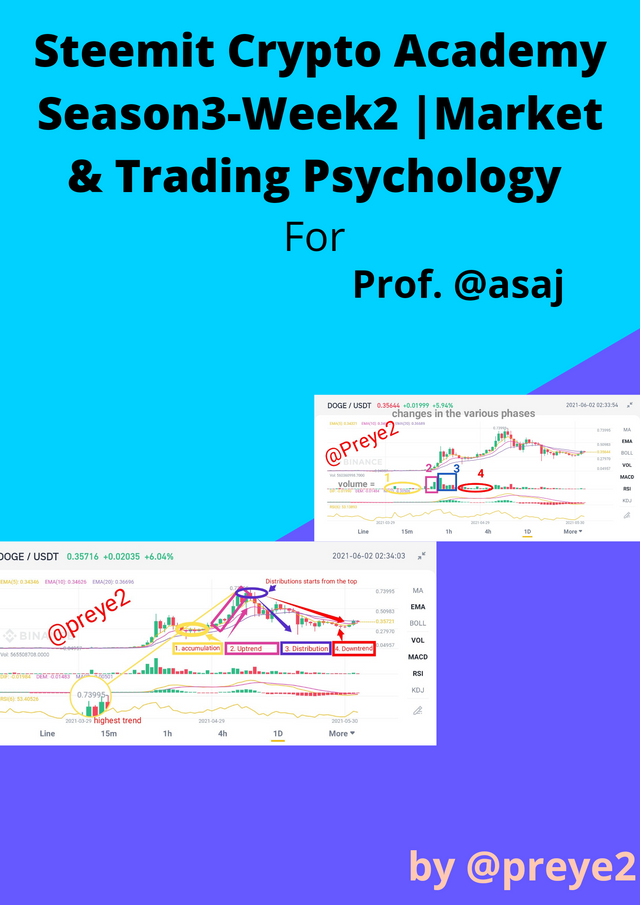Crypto Academy Season 3 || Homework task for Professor @asaj || by @preye2

Wow, let me start by saying that I have really learnt alot from your lecture respected professor @asaj, and I love the way you administer your lecture to your students with practical examples, you are indeed a teacher sir.
Market Psychology is one of the most perfect lectures to be taught at this point in time, following the recent bearish trend in the crypto currencies market that started on the 18th of April 2021.
There's no doubt that at one point in time, we all have been Jane (having one or two types of market psychologies). So am grateful to our professor for bringing such a topic, that will guide and help cryptocurrencies investors and traders on what and how to manage psychologically in the crypto market.
Having studied and understood your lecture which is on Market and Trading Psychology, permit me to proceed with my homework task.

Part A (Case Study)
Question 1
The case study given is an example of what type of psychology? Explain the reason for your answer.
Answer
Like I said earlier this is a practical example given by our professor, which is a case study of Jane and her her psychological behavior in the cryto market.
The case study (Jane) is an example of Trading psychology. Yes, as I have understood through the lecture, there are two major types of psychology in the cryto world, which includes: Trading psychology and Market psychology. Jane case is under the trading psychology because it involves only one individual (Jane).
This case study involves only her going through mental, emotional, and behavioral characteristics concerning the changes in the price of cryptocurrencies which she had held for profit purposes.

Question 2
Using the case study above, list and explain at least 5 biases that influenced Jane's trading behaviour with examples of how it affected her behaviour?
Answer
One funny truth is that this psychological behavior is a part of every human, we were born with it, we live with it, and we trade with it as well. The good news is that with proper and deep studies we can identify and control it.
Trading Bias refers to a psychological behavior, where an investor would make a decision based on his/her conceived idea of what will work or what won't work, without considering the evidence.
Bias is dangerous and should be controlled, that's what gave rise to the study of psychology and it's role in trading and investing activities (behavioral finance).

5 biases that influenced Jane's trading behavior includes:
1. Anchoring Bias: Anchoring here refers to the first piece of information that a trader spots. And in most cases, that first Information remains the most trusted and significant point to that investor, and no other alternative idea matters at that moment.
Example: In the case of Jane, After a successful order of $15 was bought, she spotted her first information, which was the increase in her assets to $20. It was at this point that she concluded that she has made a mistake, forgetting that sometimes cryptocurrencies can be unpredictable (trend), she wished she had bought it earlier than when she did, that was the beginning of the problem she later faced.
2. Confirmation Bias: This refers to a situation where a trader focuses on signs that proves his/her thoughts, and ignores indicators that contradicts his/her opinion.
Example: Remember the period when the market began to sink gradually after a bullish trend, Jane conclusively confirmed that the market would go below the $9 she was initially suppose to buy it. She focused more on the down trend because of the fear of missing out (FOMO), the more it went down, the more she buys more coins, believe me when I say it's one of the most dangerous type of bias.
3. Self-Attribution Bias: When it comes to cryptocurrencies trading, this self-attribution bias refers to giving good credits to yourself when winning, and blaming someone or something else when you fail.
Example: When Jane felt that she was winning due to the fact that the price was going the way she had predicted (bearish trend), she was happy and she even went ahead to buy more coins, because she felt she was a genius. But when things weren't going her way she blamed "stop loss" for it.
4. Herd Mentality Bias: This refers to following or copying what another investor or investors are doing without your own personal research. In most cases, you might end up buying a particular type of coin because everybody you know are buying it.
Example: Jane was influenced by the "crypto group on Telegram", where she relied solely on for trends and updates. This means that she didn't even make proper research about the coin, because she was following someone else.
5. Loss Aversion: This refers to situations where people wants to avoid losses more than their desires to make profit. In other words, afraid of any form of risk.
Example: Jane had $20, but she wasn't having a calculated plan, and she started regretting that it should have been more. And when it seemed as if she was about to loss, she averaged down her position with the aim of increasing her profits.

Question 3
List and explain how each bias you have mentioned can be avoided?
Answer
Here are the ways by which the above biases can be controlled;
Anchoring Bias: Never rely on just one sign, you are supposed to analyze the market from all points of view to get your desired goal.
Confirmation Bias: Don't just jump into conclusion, you should check your thoughts and be sure it's perfect, conduct other research and signs that goes against your view
Self-Attribution Bias: You should value failure and learn from your mistakes. You are responsible for every decisions you take, including the bad decisions. You can equally practice market analysis with some Demo indicators without any loss.
Herd Mentality Bias: You should rather seek broader views, read other people's opinions and understand their reasons for doing what they did. Following the herd is dangerous, so study and get all the knowledge you need for your personal decisions.
Loss Aversion: You would have to accept that some things are out of your power, and that risks are part of trading. Try to develop a strategy that will make you feel comfortable in your uncertainty.

Part B (Research & Analysis)

Question 4
What type of analysis can be used to monitor market psychology and trading psychology, and why? Identify the differences between trading psychology and market psychology.
Answer
When it comes to the type of analysis that can be used to monitor market and trading psychology, I would go for the trading strategy that identifies opportunities by analyzing historical prices and volume trends (Technical Analysis) sometimes referred to as the study of price pattern.
There are several trusted indicators that makes it easier for investors to make confident decisions in the market. The reason why technical analysis would be great is because it provides charts with details on market trends and reversals, using it's various tools like Moving Average Convergence Divergence (MACD), Relative Strength Index (RSI), Bollinger Band (BB) and so on.
| Differences Between Trading Psychology and Market Psychology | |
|---|---|
| Trading Psychology | Market Psychology |
| This refers to the emotional/mental state of a trader that usually determines the success or failure of a trade | This refers to the overall feeling among market participants which guides them on when to buy and sell |
| This is usually a personal behavior | This is the general behavior of others |

Question 5
How can you measure market psychology using a crypto chart? Select 5 trading biases and explain with screenshots of any cryptocurrency chart how the biases can cause a coin to be oversold and overbought. (Add watermark of your username)
Answer
Here's how you can measure psychology using a crypto chart
Like I said earlier, you can measure the psychology of the market throug trends (up and down movements).
Volume: This helps confirm the legitimacy of a trend and it equally supports and resistance level. When the volume (emotion of the market) shows a differing signal from the actual price, it indicates that the emotions of the market is not consistent with the consensus of value.
Accumulation: In Accumulation they is slight changes in volume, which means everything is going well, so it's simple to indicated that psychologically everything is kind of stable and normal.
Uptrend: Indicating through the chart, if there's a sudden increase or upward movement in the chart, it is an indication that the selling force is depleted, and it would even attract more investors and causing demand to increase.
Distribution: You know the saying "what goes up must surely come down. If you observe the chart, when the Uptrend got to a certain point it stopped and began to come down (distributes) gradually. psychologically you will discover that alot of people are selling their profitable positions.
Downtrend: Indicating through the chart, if there's a sudden decrease or downward movement in the chart, it is an indication that the supply has become much greater than the demand, and as such a Downtrend is established.

5 trading biases with screenshots of Dogecoin crypto chart on how biases can cause a coin oversold and overbought
When we say a coin is oversold, it simply means that it's a period of time where there has been a consistent downward movement in price over a specific period of time without pullback.
When we say a coin is overbought, it simply means that it's a period of time where there has been a consistent upward movement in price over a specific period of time without pullback.
1. Anchoring Bias: As you can see in the screenshot below, there's an upward movement without pullback, which means after the investors saw the first sign that the trend was going high, there was an increase in the market entry.
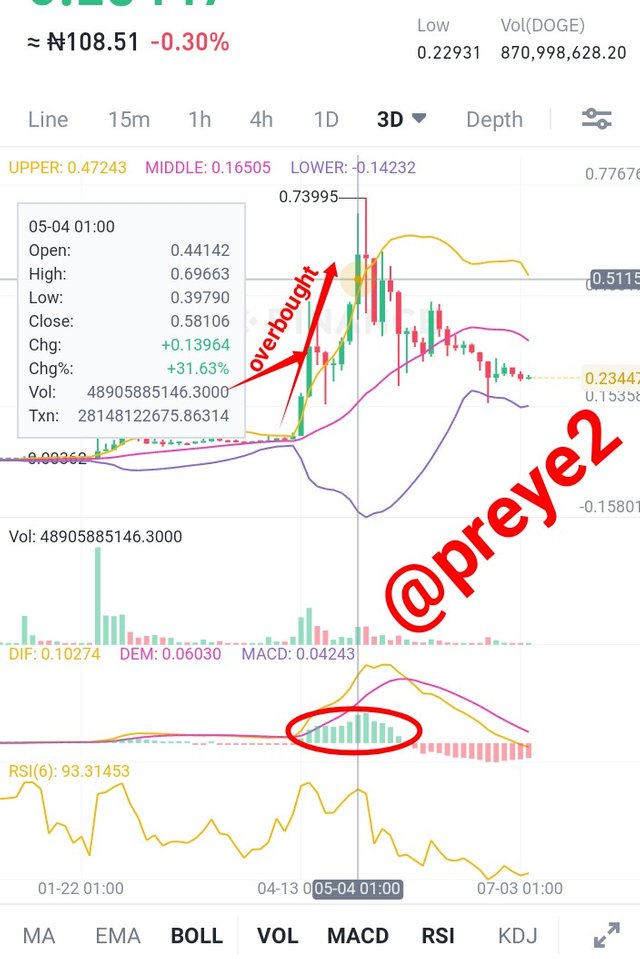
2. Confirmation Bias: The Uptrend was without pullback, which means psychologically, the investors focused on the sign that proves their thoughts were right.
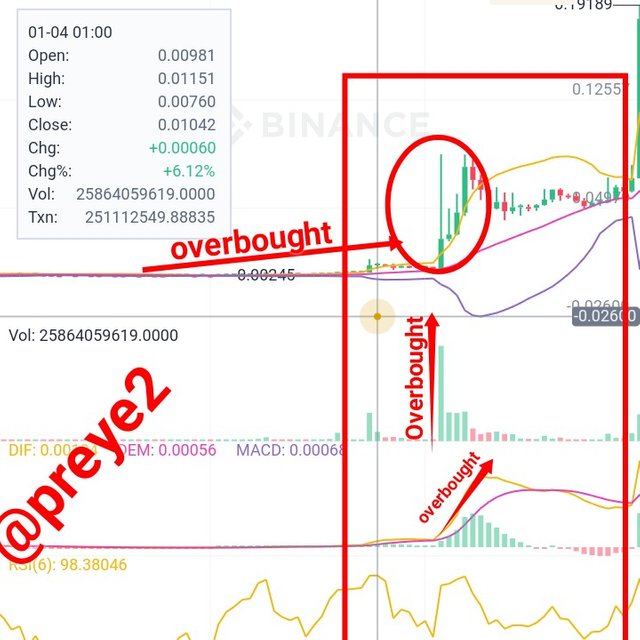
3. Herd Mentality Bias: An increase in volume and entry into the market can lead to an uptrend without pullback, you can see that psychologically, investors follow one another into the market without having their personal strategy.
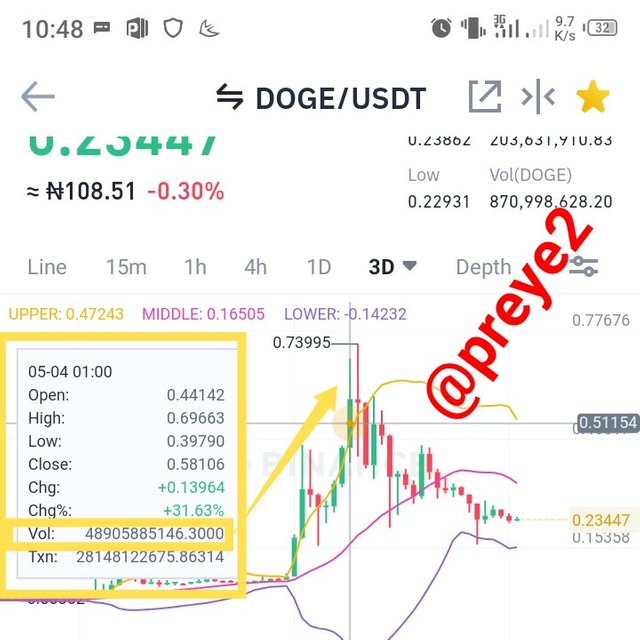
4. Loss Aversion: As you can see in the screenshot below, there's a Downtrend without pullback, which means the investors are afraid of any form of risk, whereby selling all their profitable positions and causing a massive downtrend.
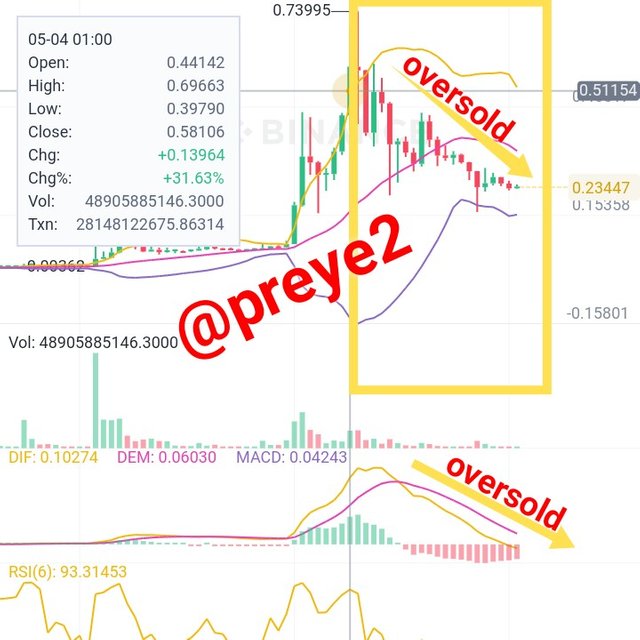
5. Emotional Bias: When investors began to feel emotional (fear, greed, regret) there began to try by all means to balance their positions, whereby selling their profits which lead to a downtrend/oversold as shown below.
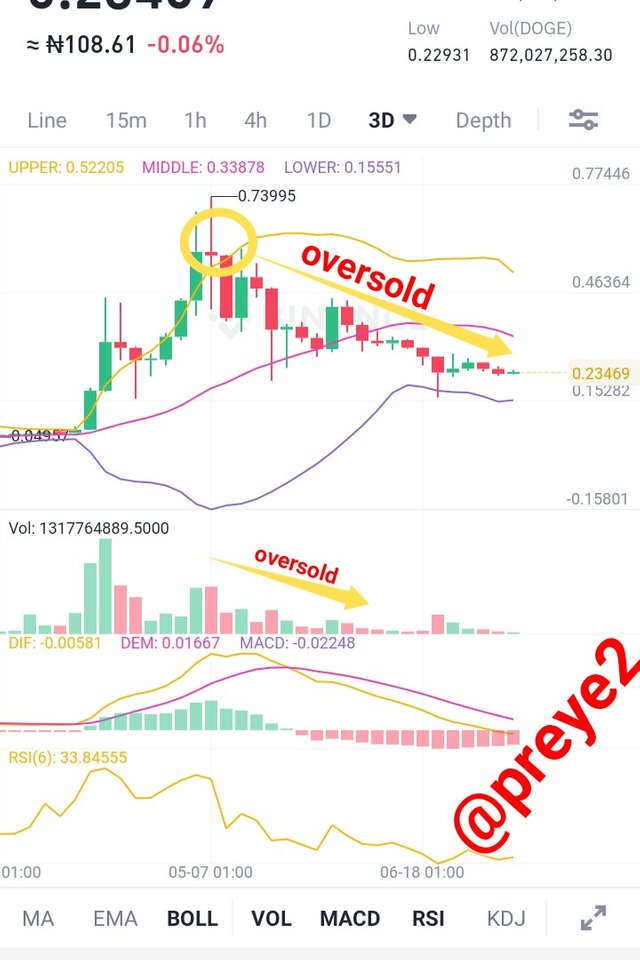

Question 6
In your own words, define the term efficient market hypothesis (emh). List and explain the advantages and disadvantages of efficient market hypothesis (emh)
Answer
Efficient Market Hypothesis is a theory that states that all known and latest information about a market are related to the asset prices. This simply means that the markets are perfectly efficient and that assets are trading at their fair value.
Some advantages of efficient market hypothesis includes:
- It saves time: Because the stock market is efficient, you don't need to spend so much time in analyzing it, you should just buy or sell stocks which requires no research and analysis.
- It saves the money of Innocent Investors: Some innocent investors tries to enter the market with the thoughts that they can earn huge money, but the efficient market makes it clear that the stock market should be viewed as a speculative game and not a place where one can earn a consistent return by buying and selling stocks with less/high value.
Some disadvantages of efficient market hypothesis includes:
Stock Markets is not a gambling: The risk taken in stock markets are calculated ones as opposed to gambling, which is nothing but pure speculation.
The market are Irrational: The argument that market timing can do nothing fails due to the irrational nature of stock markets. The stock market can get irrational due to panic and stocks would be available at throwaway prices.

Conclusion
- The first phase of the lecture which was more about market/trading psychology, using a case study of Jane, was really very educative. Because I got to know other types of biases which includes; anchoring, confirmation, herd mentality, loss aversion, and emotional bias.
- To be able to control this biases, we need to have a desired goal, and to always study and make personal research before we go into trading, and not to just follow others.
- Trends can determine the psychology of a market.
- According to the efficient market hypothesis, it is impossible to "beat the market" by selling stocks at a higher price than they're worth.
This lecture is indeed very educative and would go a long way to help cryto investors on what to do, especially at this period where most investors are psychologically confused.
Note: All pictures are personal screenshots from my Binance exchange account chart.
